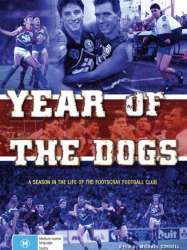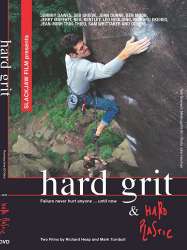Films with theme "Documentary films about sports", sorted by revenue
 , 45minutes
, 45minutesThemes Sports films, Basketball films, Documentary films about sports
This film contains footage of slam dunks by NBA players such as Julius Erving, Dominique Wilkins, Michael Jordan, and Darryl Dawkins, and a large number of bloopers by various players, including Danny Ainge, Bill Walton, and Frank Johnson. Recaps of NBA slam dunk contests from 1984 to 1988 are also shown. The video also features brief bios of NBA personalities including Darryl Dawkins, John Salley & Frank Layden. and footage of dolphins playing basketball, a group playing basketball while riding horses and a group playing basketball on ice skates.

I'm from Hollywood (1989)
, 1h1Genres Comedy, Documentary
Themes Sports films, Documentary films about sports, Professional wrestling documentary films, Documentaire sur une personnalité
Actors Andy Kaufman, Tony Danza, Marilu Henner, Robin Williams, Bob Zmuda
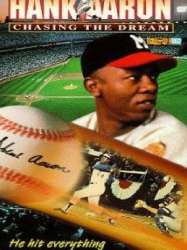 , 2h
, 2hDirected by Michael Tollin
Origin USA
Genres Documentary
Themes Sports films, Baseball films, Documentary films about sports

Soul In The Hole (1997)
, 1h38Origin USA
Genres Documentary
Themes Sports films, Basketball films, Documentary films about sports
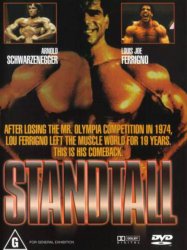
Stand Tall (1997)
, 1h24Genres Documentary
Themes Sports films, Documentary films about sports, Documentaire sur une personnalité, Films about disabilities
Actors Arnold Schwarzenegger, Lou Ferrigno, Billy Barty, Billy Crystal

Super Speedway (1997)
, 50minutesOrigin Canada
Genres Documentary
Themes Sports films, Transport films, Films about automobiles, Auto racing films, Documentary films about sports, Documentary films about technology, Road movies
Actors Paul Newman
Super Speedway vous immerge complètement dans un tout technique incroyablement détaillé avant de vous faire embarquer, via des plans semi-subjectifs particulièrement enthousiasmants, sur l'un de ces monstres de circuit que le film ne cesse de contempler et même d'implorer, dans toute sa perfection technique, affirmant peu à peu le pouvoir de conviction presque mystique qui frappe certains surhommes, adeptes pratiquants de vitesse et adorateurs des limites physiques admises. Ce film IMAX a été filmé en partie sur le circuit de Toronto, au Canada, lors des essais pour un grand prix.

Directed by Steven Hilliard Stern
Origin USA
Genres Documentary, Historical
Themes Sports films, Basketball films, Documentary films about sports, Documentary films about law
Actors Liev Schreiber
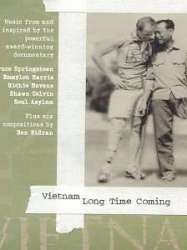
Vietnam Long Time Coming (1998)
, 2hOrigin USA
Genres Documentary
Themes Sports films, Documentary films about sports, Documentary films about war, Documentary films about historical events, Documentaire sur une personnalité, Documentary films about health care, Films about disabilities, Political films

On the Ropes (1999)
, 1h34Directed by Nanette Burstein, Brett Morgen
Origin USA
Genres Documentary
Themes Sports films, Martial arts films, Boxing films, Documentary films about sports
Actors Sam Doumit

One Day in September (1999)
, 1h31Directed by Kevin Macdonald
Origin Suisse
Genres Documentary, Historical
Themes Sports films, Films about terrorism, Documentary films about sports, Films about the Olympic Games, Documentary films about law, Documentary films about war, Documentary films about historical events, Documentary films about politics, Documentary films about terrorism, Political films
Actors Michael Douglas, Peter Jennings
1972. Jeux olympiques de Munich. 121 nations, 7 123 athlètes. Pour la première fois, les chaînes de télévision du monde entier sont là pour retransmettre l'évènement.
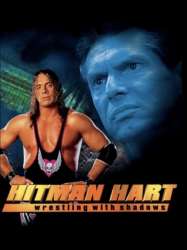 , 1h33
, 1h33Directed by Paul Jay
Genres Documentary
Themes Sports films, Documentary films about sports, Professional wrestling documentary films, Documentaire sur une personnalité
Actors Stone Cold Steve Austin, Mick Foley, Marc Mero, Randy Savage, Triple H, Shane McMahon
As his contract nears expiration in March 1996, professional wrestler Bret "Hitman" Hart was torn between two companies, World Wrestling Federation (WWF) and World Championship Wrestling (WCW) during the Monday Night Wars. On one hand, the WWF was his home. The chairman of the company, Vince McMahon, is a father figure to Hart and takes credit for Hart's rise to international wrestling stardom. However, the company's new creative approach to marketing professional wrestling, the "WWF Attitude" marketing brand which relies on an emphasis on sex, extreme violence, and the replacing of heroic wrestling characters with disaffected anti-heroes in effort to compete against the already-popular WCW, has left Hart disillusioned.

Shadow Boxers (1999)
, 1h12Origin USA
Genres Documentary
Themes Sports films, Martial arts films, Boxing films, Documentary films about sports, Documentaire sur une personnalité
Actors Michael Bentt
Bankowsky began working on a film about women's boxing in the early 1990s, when she was training to fight at Gleason's Gym in Brooklyn. Filming commenced at the 1995 Golden Gloves competition, the first year the tournament was open to female participants, a group which included Bankowsky herself. After filming the Golden Gloves, Bankowsky began searching for the woman she thought would be the first truly great female champion. After meeting with Barbara Buttrick, founder of the WIBF, who was in the process of starting a global database of women interested in the sport, Bankowsky came across footage of Rijker and decided she would be the perfect subject for her film.
 , 41minutes
, 41minutesDirected by Greg MacGillivray
Origin USA
Genres Documentary
Themes Sports films, Documentary films about sports
Actors Jimmy Smits, Roy E. Disney
 Connection
Connection
